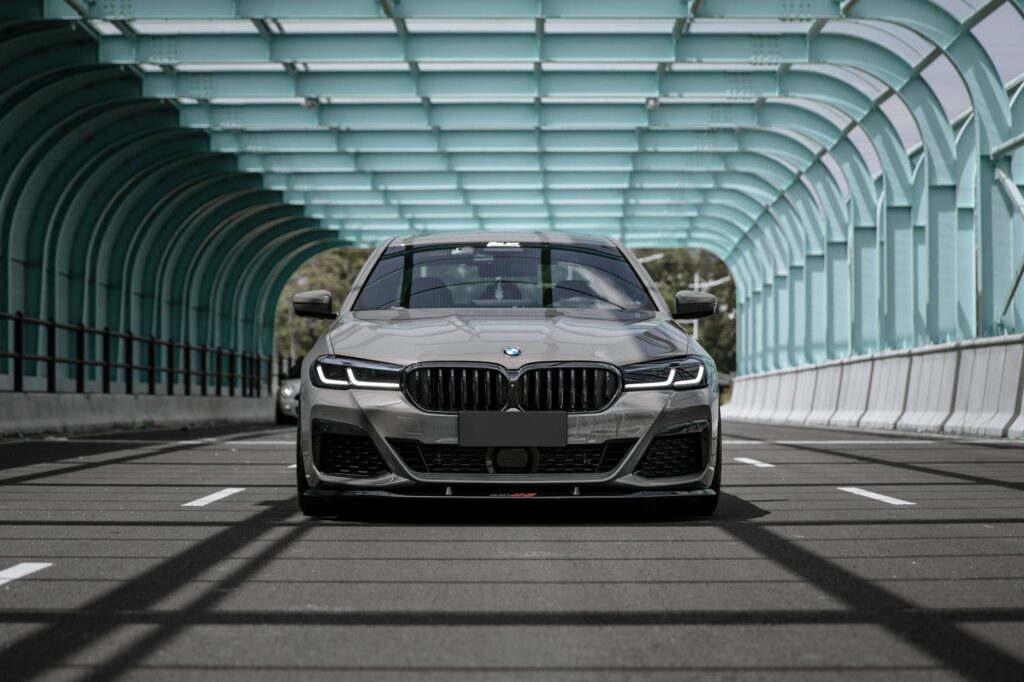
When you invest in a new vehicle, the excitement is palpable – the fresh scent, the pristine interior, the promise of years of reliable transportation. Yet, beneath the surface of that initial thrill lies a financial reality that every buyer must confront: depreciation. It’s often the single largest cost of car ownership, a ‘cruel mistress’ that begins to erode your car’s value the moment it rolls off the lot. Understanding which vehicles hold their value and which plummet is absolutely paramount for anyone looking to make a smart financial decision with their next purchase.
Recent data from iSeeCars.com, which analyzed transaction prices of 800,000 five-year-old used cars sold from March 2024 to February 2025, offers a stark look at this phenomenon. While some vehicles like mainstream trucks, SUVs, and sports cars are lauded for their tenacious value retention, a darker side exists where some models, particularly luxury vehicles and certain electric vehicles, fall prey to steep depreciation. This invaluable research helps us understand not just what to buy, but more importantly, what to potentially avoid if long-term value retention is a priority.
Our focus today is on a specific segment that, despite its enduring appeal for many, often struggles significantly in the used market: sedans. We’ll delve into ten specific sedans that have proven to be ‘resale disasters’ after just five years of ownership. These aren’t necessarily bad cars in terms of quality or performance, but their financial trajectory makes them challenging propositions for those who care about their wallet down the road. Prepare to examine which models suffer from the steepest declines and why, so you can navigate the market with confidence and foresight.

1. **BMW 7 Series: Luxury That Quickly Loses Its Luster**The BMW 7 Series, a name synonymous with flagship luxury and cutting-edge technology, often captivates new car buyers with its opulent interiors, powerful engines, and a dizzying array of advanced features. It represents the pinnacle of BMW engineering and design. However, despite this initial brilliance, the 7 Series stands out as one of the worst performers in terms of five-year resale value, shedding a massive 67.1% of its original MSRP, which translates to an average loss of $65,249.
One of the primary drivers behind this precipitous drop is the relentless pace of innovation within the ultra-luxury sedan segment. Buyers of new 7 Series models expect nothing less than the very latest technological marvels—gesture controls, expansive touchscreens, and sophisticated semi-autonomous driving systems. This rapid evolution means that a five-year-old 7 Series, no matter how advanced it was at launch, can quickly feel dated, diminishing its appeal to used car buyers who are often looking for current features without the brand-new price tag.
Furthermore, the cost of ownership for a BMW 7 Series can be extraordinarily high once the factory warranty expires. Even routine maintenance tasks carry a premium price, and any issues with its intricate electronic systems or complex engine components often necessitate specialized attention, leading to exorbitant repair bills. These potential long-term expenses act as a significant deterrent for secondhand buyers, pushing them towards alternatives that promise more manageable running costs.
Market dynamics also play a crucial role. A substantial percentage of new 7 Series models are leased, leading to a consistent influx of off-lease vehicles into the used market once their terms conclude. This oversupply, coupled with a generally limited demand for large, depreciating luxury sedans, drives resale prices downwards. Additionally, BMW’s frequent design refreshes and major redesigns, like the distinctive grille of more recent models, can rapidly make older versions appear visually outdated, further eroding their value.
Ultimately, while the BMW 7 Series delivers an unparalleled driving and passenger experience in its prime, it proves to be a significant financial liability if long-term value retention is a concern. Unless you are leasing or securing a substantial discount on a used model, buyers should be prepared for a substantial monetary loss when it eventually comes time to sell or trade in this luxury sedan.
Car Model Information: 2019 Lexus GX 460 Premium
Name: BMW 7 Series
Caption: BMW 7 Series (G11)
Manufacturer: BMW
Production: 1977–present
Class: Full-size car,luxury car
BodyStyle: sedan (car)
Predecessor: BMW New Six
Categories: All articles with dead external links, Articles with dead external links from July 2021, Articles with short description, BMW vehicle series, CS1 Chinese-language sources (zh)
Summary: The BMW 7 Series is a full-size luxury sedan manufactured and marketed by the German automaker BMW since 1977. It is the successor to the BMW E3 “New Six” sedan and is now in its seventh generation.
The 7 Series is BMW’s flagship car and is only available in a sedan bodystyle (including long wheelbase and limousine models). It traditionally introduces technologies and exterior design themes before other models in BMW’s lineup.
The first generation of the 7 Series was powered by straight-6 petrol engines, and following generations have been powered by inline-4, straight-6, V8 and V12 engines with both natural aspiration and turbocharging. Since 1995, diesel engines have been optional in the 7 Series.
Unlike the BMW 3 Series and BMW 5 Series sedans, BMW does not offer a full M model, but once offered an M performance variant, the BMW M760 with its 6.6L V12 (at the time the most powerful BMW ever made, not to be confused with BMW 760 6.6 V12 which does not offer the same performance). The Alpina B7 served as the high-performance variant of the 7 Series.
Get more information about: BMW 7 Series
Buying a high-performing used car >>>
Brand: BMW Model: 7 Series
Price: $30,991 Mileage: 72,932 mi.
Read more about: Is the 2025 Toyota Corolla Hybrid the Ultimate Urban Companion? An In-Depth Car and Driver Analysis
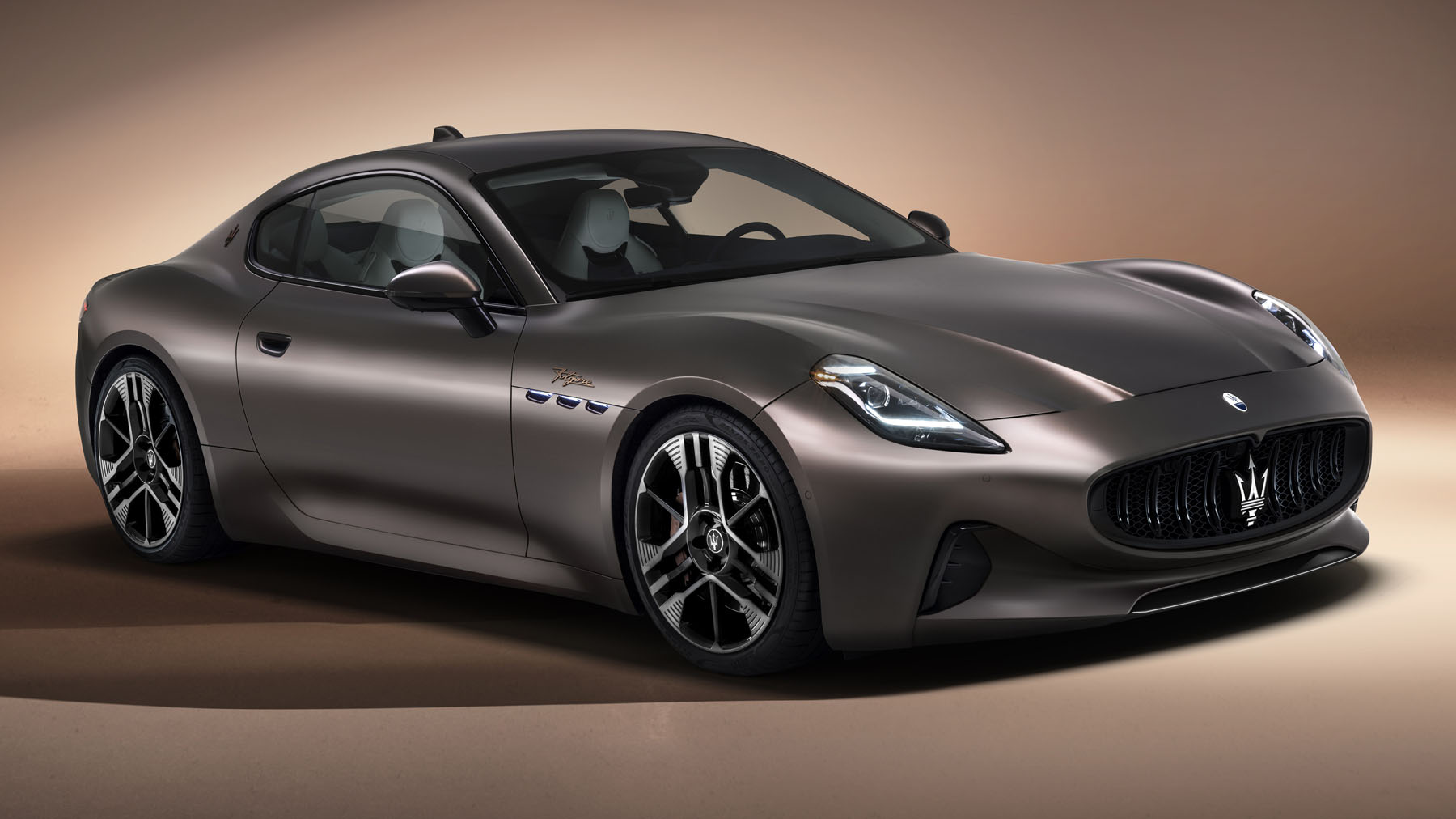
2. **Maserati Ghibli: Exotic Appeal, Swift Depreciation**The Maserati Ghibli enters the scene with an undeniable flair, offering Italian elegance, a distinctive roar, and a powerful driving experience that sets it apart from many luxury sedans. It embodies a certain exotic appeal, attracting buyers who desire a blend of performance and exclusivity. However, this allure unfortunately does not translate into strong long-term value; the Ghibli is reported to lose a staggering 64.7% of its original MSRP over five years, amounting to an average financial hit of $70,874.
As iSeeCars Executive Analyst Karl Brauer explains, “While a premium badge and the increased performance or luxury features that come with it are often sought out by new car buyers, the used car market doesn’t prioritize those traits to the same degree, thus the consistently higher depreciation for luxury models.” This sentiment perfectly encapsulates the Ghibli’s predicament. Its premium badge initially commands a high price, but the used market tends to be more pragmatic, seeking reliability and lower running costs over initial prestige.
Market perception and competition also contribute to the Ghibli’s rapid depreciation. While Maserati holds a unique position, it often competes against more established German luxury brands in the used market that might offer a stronger reputation for build quality, broader dealer networks, and more predictable maintenance schedules. This makes a used Ghibli a more niche and potentially riskier proposition for the average secondhand buyer, impacting demand and consequently, resale prices.
Furthermore, the cost of maintaining an exotic performance luxury car like the Ghibli can be exceptionally high. Specialized parts, sophisticated engineering, and the necessity for expert servicing all contribute to elevated running costs. These steep maintenance expenditures, coupled with the potential for costly repairs once the factory warranty has expired, deter budget-conscious used buyers and significantly depress the car’s perceived long-term value.
In essence, the Maserati Ghibli exemplifies the challenges faced by many high-end luxury vehicles in the resale market. Its initial high sticker price and exotic charm simply do not insulate it from considerable financial losses over time. For those considering a Ghibli, it’s a clear example where the joy of ownership must outweigh the expectation of strong financial return.
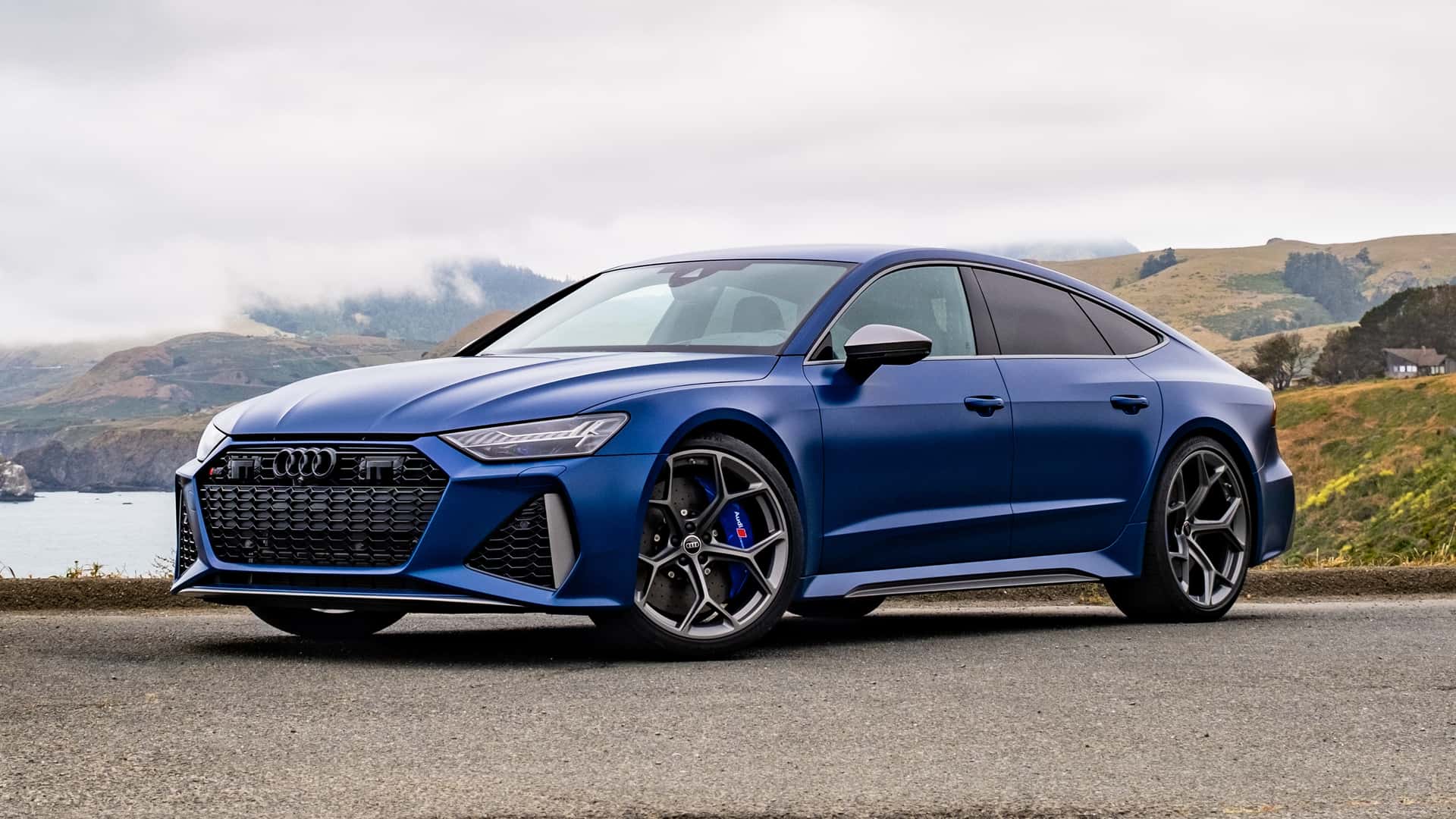
3. **Audi A8L: Executive Comfort, Depreciating Asset**The Audi A8L represents the pinnacle of Audi’s sedan lineup—a long-wheelbase executive sedan renowned for its understated elegance, advanced Quattro all-wheel-drive system, and a cabin that epitomizes technological sophistication and comfort. It’s a vehicle designed to transport its occupants in ultimate luxury and style. Yet, despite its commanding presence and impressive engineering, the A8L suffers from substantial depreciation, losing 62.7% of its original MSRP over five years, which amounts to an average loss of $57,724.
Similar to its luxury competitors, the rapid advancement of technology in the premium sedan segment significantly impacts the A8L’s long-term value. Audi consistently introduces groundbreaking infotainment systems, driver-assistance features, and connectivity options with each new generation or refresh. Consequently, a five-year-old A8L, while still incredibly capable, may lack the very latest features that discerning used luxury buyers are seeking, making it less attractive compared to newer models or even rivals.
The complex systems and highly sophisticated engineering embedded within the A8L also contribute to its depreciation. These advanced components, while enhancing the driving experience, invariably lead to higher maintenance and repair costs, particularly once the vehicle is out of its original warranty period. Potential buyers in the used market are acutely aware of these expenses, which can range from intricate electrical issues to specialized suspension repairs, thus reducing the willingness to pay a premium for an older model.
Furthermore, the competitive nature of the full-size luxury sedan market means that the A8L is always contending with powerful offerings from Mercedes-Benz, BMW, and other premium marques. While Audi maintains a strong brand image, factors such as market saturation or the strategic positioning of incentives for new models can inadvertently suppress the resale values of older A8L variants. This dynamic ensures that a steady supply often meets a fluctuating demand in the secondhand market.
Ultimately, while the Audi A8L provides a supremely comfortable and powerful driving experience, its financial performance in the used market leaves much to be desired. Buyers prioritizing long-term value retention should be mindful that the initial allure and executive comforts of this flagship sedan come with a significant depreciation cost over its first half-decade of ownership.

4. **BMW 5 Series: The Executive Sedan’s Value Decline**The BMW 5 Series has long been a benchmark in the executive midsize luxury sedan segment, celebrated for its engaging driving dynamics, refined interior, and strong brand prestige. It strikes a balance between performance and practicality, making it a popular choice for business professionals and discerning families alike. However, even this popular luxury sedan is not immune to the forces of depreciation, with the non-hybrid 5 Series losing a significant 61.7% of its original MSRP after five years, equating to an average financial impact of $36,208.
The competitive landscape of the midsize luxury sedan market is a significant factor in the 5 Series’ depreciation. With frequent model refreshes and the introduction of new generations, previous iterations can quickly lose their perceived value as buyers gravitate towards the latest designs and technologies. This constant churn in the segment means that even a well-regarded model like the 5 Series faces an uphill battle in maintaining its resale value against newer, shinier rivals.
While generally more manageable than the 7 Series, the maintenance and repair costs associated with the BMW 5 Series are still considerably higher than those for mainstream vehicles. Premium parts and specialized labor contribute to these elevated expenses, which become a greater concern for used car buyers once the initial factory warranty has expired. The prospect of significant out-of-pocket costs for unexpected repairs can make a used 5 Series less appealing compared to alternatives with lower predicted running costs.
Leasing programs also play a substantial role in the depreciation of the 5 Series. A high volume of these vehicles are leased, and when those leases conclude, they flood the used car market, creating an oversupply. This influx of available vehicles drives down prices across the board, making it challenging for private sellers to achieve favorable trade-in or resale values. The abundance of choice allows used car buyers to be more selective and negotiate lower prices.
While the BMW 5 Series continues to offer a compelling blend of luxury, performance, and sophistication, its performance in the resale market is a stark reminder of the financial realities of luxury car ownership. Buyers focused on retaining value should factor in this considerable depreciation when considering a 5 Series, recognizing that its initial appeal doesn’t translate into strong long-term financial returns.
Car Model Information: 2019 Lexus GX 460 Premium
Name: BMW 5 Series
Manufacturer: BMW
Production: 1972–present
Class: Executive car
BodyStyle: Sedan (automobile)
Layout: Front-engine, rear-wheel-drive,Front-engine, all-wheel-drive
Predecessor: BMW New Class
Categories: 1980s cars, 1990s cars, 2000s cars, 2010s cars, 2020s cars
Summary: The BMW 5 Series is an executive car manufactured and marketed by BMW since 1972. It is the successor to the BMW New Class sedans and is currently in its eighth generation. The car is sold as either a sedan or, since 1991, a station wagon (marketed as “Touring”). A 5-door fastback (marketed as “Gran Turismo”) was sold between 2009 and 2017. Each successive generation has been given an internal G-code designation since 2017. Previously, a F-code designation was used between 2010 and 2016, while an E-code designation was used between 1972 and 2010. These are used to distinguish each model and generation from each other.
The first generation of the 5 Series was powered by naturally aspirated four-cylinder and six-cylinder petrol engines. Following generations have been powered by four-cylinder, six-cylinder, V8 and V10 engines that are either naturally aspirated or turbocharged. Since 1982, diesel engines have been included in the 5 Series range.
The 5 Series is BMW’s second-best-selling model after the 3 Series. On 29 January 2008, the 5 millionth 5 Series was manufactured, a 530d sedan in Carbon Black Metallic. It is BMW’s oldest nameplate still in production and the first model line to use “Series” in the name, debuting the three-digit model naming convention still used today. Since the E28, all generations of 5 Series have included an “M” model, called the BMW M5.
Get more information about: BMW 5 Series
Buying a high-performing used car >>>
Brand: BMW Model: 5 Series
Price: $30,991 Mileage: 72,932 mi.
Read more about: Buyer Beware! These 15 Cars Will Become Your Worst Financial Nightmare After Hitting 100,000 Miles

5. **Mercedes-Benz S-Class: The Cost of Ultimate Prestige**As the undisputed flagship of the Mercedes-Benz lineup, the S-Class sets the global standard for luxury, comfort, and automotive innovation. It’s often where groundbreaking technologies debut before trickling down to other models, and its cabin is a sanctuary of premium materials and exquisite craftsmanship. The S-Class is a symbol of prestige and engineering excellence. Yet, even this icon of luxury faces substantial depreciation, losing 60.7% of its original MSRP over five years, a hefty average of $71,460.
The S-Class’s role as a technological pioneer is a double-edged sword when it comes to resale value. While new buyers relish the bleeding-edge features, these advanced systems quickly become previous-generation tech as Mercedes-Benz continually introduces newer, more sophisticated iterations. The constant pursuit of the latest and greatest means that older S-Class models, despite their inherent quality, can rapidly feel outmoded, reducing their desirability and thus their value in the used market.
Perhaps more than any other sedan, the S-Class embodies extreme ownership costs. Its intricate, high-end components and complex systems, from air suspension to advanced driver-assistance features, necessitate specialized servicing and repair. These expenses are exceptionally high, making the prospect of owning an S-Class outside of its factory warranty period a daunting financial commitment for most used car buyers. The cost of maintenance alone can be a significant barrier to entry.
Even with the formidable brand strength of Mercedes-Benz, the S-Class operates in a niche segment of the used market. The specific buyer pool willing to absorb the high running costs and depreciation of an older S-Class is limited. This, combined with the availability of competitive luxury sedans and the general trend of luxury vehicle depreciation, creates a challenging environment for value retention. The market simply doesn’t reward older models of ultimate luxury with sustained high prices.
Ultimately, the Mercedes-Benz S-Class is a testament to automotive luxury and innovation, offering an unparalleled experience. However, for those concerned with the financial implications beyond the initial purchase, its significant depreciation makes it a challenging proposition. It’s a vehicle where the pursuit of ultimate prestige comes with a substantial, quantifiable cost in lost value over time, serving as a powerful reminder that not all investments yield positive returns.
The financial journey of a new vehicle can be a rollercoaster, and as we’ve seen, some luxury sedans embark on a steep downhill trajectory almost immediately after leaving the showroom. But the tale of rapid depreciation isn’t confined to just the established flagships; it also touches upon innovative electric models and other premium offerings that, despite their initial appeal, become significant liabilities in the used car market. Understanding these trends is crucial for any savvy buyer hoping to protect their investment.
As we continue our exploration of sedans that turn into ‘resale disasters’ after five years, we’ll delve into a mix of electric powerhouses and sophisticated combustion-engine models. These vehicles, each with its own set of characteristics and market challenges, consistently rank among those that suffer the steepest declines in value, leaving owners with far less equity than they might have anticipated. Let’s uncover the next five models that demand a cautious approach if long-term financial health is a priority.
Read more about: Decoding Luxury Car Ownership: The Critical Role of Specialized Maintenance for High-End Vehicles
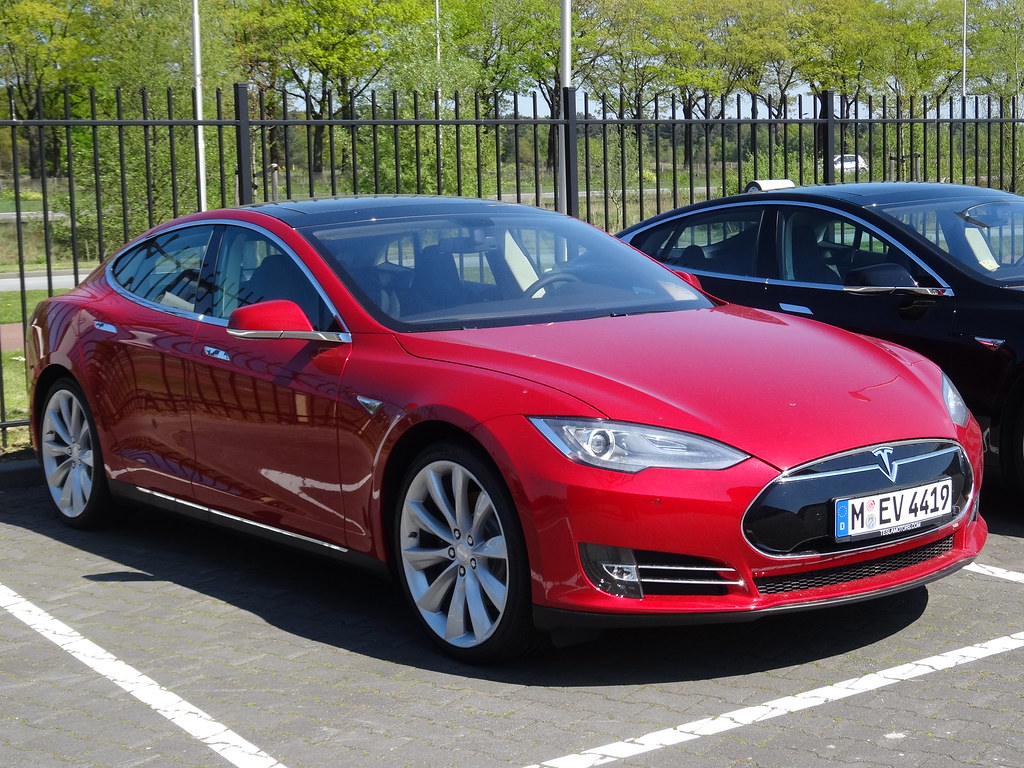
6. **Tesla Model S EV: The Pioneer’s Perilous Plummet**The Tesla Model S, a groundbreaking pioneer in the electric vehicle revolution, captured imaginations with its sleek design, astonishing performance, and cutting-edge technology. It redefined what an EV could be, setting new benchmarks for range and software integration. However, despite its revolutionary status and premium positioning, the Model S has faced a steep decline in value, losing a substantial 65.2% of its original MSRP over five years, which amounts to an average financial impact of $52,165.
This precipitous drop is emblematic of the challenges faced by many high-tech commodities. “The rogues gallery also includes a number of full-electric vehicles that, like most cutting-edge tech-driven commodities, tend not to age gracefully,” as the report points out. The rapid pace of innovation in the EV sector means that even advanced features can quickly become superseded. Newer Tesla models or competitors frequently introduce extended ranges, faster charging capabilities, and upgraded autonomous driving hardware, making older Model S variants feel less cutting-edge and diminishing their appeal to used car buyers seeking the latest and greatest.
Furthermore, market sentiment around Tesla has seen considerable volatility. The brand’s rapid growth and the often-publicized pronouncements from its eccentric CEO, Elon Musk, have contributed to a unique market dynamic. While this generates immense interest, it can also lead to unpredictable fluctuations in perceived value. The specific challenges associated with an evolving brand, coupled with the general trend that “Electric vehicles lose the most value after purchase, falling 58.8% in 5 years,” highlight a systemic issue within the segment.
Concerns about battery degradation over time, the cost of potential battery replacements, and the ever-changing landscape of charging infrastructure also weigh heavily on the minds of used EV buyers. Unlike traditional internal combustion engines where wear and tear are more predictable, the long-term health and expense associated with a high-voltage battery system introduce an element of financial uncertainty. This uncertainty often translates into lower resale values, as buyers factor in potential future costs and technological obsolescence.
Ultimately, while the Tesla Model S remains an influential vehicle, its journey through the used car market is a stark reminder that innovation, while exciting, doesn’t always guarantee sustained financial value. For early adopters, the thrill of driving a technological marvel might outweigh the substantial depreciation, but for those focused on long-term investment, the Model S presents a significant financial risk.
Car Model Information: 2019 Lexus GX 460 Premium
Name: Tesla Model S
ModelYears: 2013–present
Alt: A front-three quarter view of a gray Model S
Caption: #2016–2019: First major update
Designer: Franz von Holzhausen
Weight: cvt
Height: cvt
Width: cvt
Length: cvt
Wheelbase: cvt
ElectricRange: cvt
Battery: kWh,lithium-ion battery
Motor: Unbulleted list
Transmission: Reduction drive
Related: Tesla Model X
Layout: Rear-motor, rear-wheel drive,Dual-motor, all-wheel-drive,Tri-motor, all-wheel-drive layout
BodyStyle: liftback,sedan (automobile)
Class: Full-size car
Assembly: Unbulleted list
Production: June 2012 – present
Manufacturer: Tesla, Inc.
Sp: us
Chassis: Unibody
Categories: 2020s cars, All-wheel-drive vehicles, All Wikipedia articles written in American English, All articles containing potentially dated statements, Articles containing potentially dated statements from 2025
Summary: The Tesla Model S is a battery-electric, four-door full-size car produced by the American automaker Tesla since 2012. The automaker’s second vehicle and longest-produced model, the Model S has been described as one of the most influential electric cars in the industry. Car and Driver named it one of the best cars of the year in 2015 and 2016. Its various accolades include the Motor Trend Car of the Year Award in 2013.
Tesla started developing the Model S around 2007 under the codename WhiteStar, with Henrik Fisker appointed as lead designer for the project. After a dispute with Elon Musk, Tesla’s CEO, Fisker was replaced by Franz von Holzhausen who, by 2008, had designed the production Model S’s exterior. Tesla unveiled a prototype of the vehicle in March 2009 in Hawthorne, California. In 2010, Tesla acquired a facility in Fremont, California, to produce the Model S, which was previously owned by General Motors and Toyota. Series manufacture of the car officially began at the Tesla Fremont Factory in June 2012. Tesla carried out the final assembly for European markets at its facilities in Tilburg, Netherlands, between 2013 and 2021.
Constructed mostly of aluminum, the Model S shares 30 percent of its components with the Model X—a crossover SUV that was introduced in 2015. The Model S has undergone several updates during its production, the most prominent ones occurring in 2016 and 2021. These updates have usually included modifications to the motor, such as changes to power or torque, revised exterior elements, and refreshed interior features. One such change included the 2015 introduction of Tesla Autopilot—a partial vehicle automation advanced driver-assistance system. The 2021 update led to the introduction of the high-performance, three-motor Plaid—Tesla’s most powerful model.
In 2015, the Model S was the world’s best-selling plug-in electric vehicle. In 2012, it was included on Time’s list of the Best Inventions of the Year, and the magazine later included it on its list of the 10 Best Gadgets of the 2010s in 2019. In 2014, The Daily Telegraph described the Model S as a “car that changed the world”. Road & Track argued that, with the introduction of the Plaid and features such as the yoke steering wheel, Tesla managed to turn the Model S into “perhaps one of the worst [cars in the world]”.
Get more information about: Tesla Model S
Buying a high-performing used car >>>
Brand: Tesla Model: Model S
Price: $30,991 Mileage: 72,932 mi.
7. **BMW 5 Series Hybrid: Premium Efficiency, Pricy Depreciation**The BMW 5 Series Hybrid aims to combine the executive luxury and engaging driving dynamics of the renowned 5 Series with enhanced fuel efficiency through its electrified powertrain. It represents a sophisticated attempt to offer the best of both worlds, appealing to buyers who desire a greener footprint without sacrificing performance or prestige. However, this blend of luxury and hybrid technology hasn’t insulated it from significant value loss, with the BMW 5 Series hybrid losing 64.7% of its original MSRP over five years, an average financial hit of $47,457.
This depreciation rate, notably higher than its non-hybrid counterpart which loses 61.7% of its value, underscores a specific challenge for luxury hybrids in the used market. While hybrids generally exhibit better value retention than pure EVs (losing 40.7% compared to EVs’ 58.8%), this particular luxury hybrid struggles. This can be attributed to several factors including the complex interplay of advanced gasoline engines and electric motors, which can lead to higher specialized maintenance costs once the manufacturer’s warranty expires.
The luxury hybrid segment also faces intense competition and rapid technological shifts. As new generations of hybrid and plug-in hybrid vehicles arrive, offering improved battery range, more seamless power delivery, and enhanced efficiency, older models quickly lose their competitive edge. Used car buyers, particularly in the premium segment, are often looking for the latest advancements, making a five-year-old luxury hybrid less appealing if its technology has been significantly surpassed by newer offerings.
Another contributing factor is the high initial cost of luxury hybrid vehicles. While they offer fuel savings over time, the premium price tag means there’s more value to lose through depreciation. When these vehicles enter the used market, the pool of buyers willing to pay a premium for older hybrid technology, coupled with the potential for costly component repairs, is often limited, driving prices down faster than anticipated. The perceived complexity of these systems compared to conventional powertrains can also deter buyers.
Therefore, while the BMW 5 Series Hybrid delivers a refined and efficient driving experience for its original owner, its performance in the resale market highlights the significant financial considerations unique to luxury hybrids. Prospective buyers should weigh the environmental benefits and initial efficiency gains against the reality of substantial value depreciation, preparing for a notable financial impact when it comes time to move on from the vehicle.
Car Model Information: 2019 Lexus GX 460 Premium
Name: BMW 5 Series
Manufacturer: BMW
Production: 1972–present
Class: Executive car
BodyStyle: Sedan (automobile)
Layout: Front-engine, rear-wheel-drive,Front-engine, all-wheel-drive
Predecessor: BMW New Class
Categories: 1980s cars, 1990s cars, 2000s cars, 2010s cars, 2020s cars
Summary: The BMW 5 Series is an executive car manufactured and marketed by BMW since 1972. It is the successor to the BMW New Class sedans and is currently in its eighth generation. The car is sold as either a sedan or, since 1991, a station wagon (marketed as “Touring”). A 5-door fastback (marketed as “Gran Turismo”) was sold between 2009 and 2017. Each successive generation has been given an internal G-code designation since 2017. Previously, a F-code designation was used between 2010 and 2016, while an E-code designation was used between 1972 and 2010. These are used to distinguish each model and generation from each other.
The first generation of the 5 Series was powered by naturally aspirated four-cylinder and six-cylinder petrol engines. Following generations have been powered by four-cylinder, six-cylinder, V8 and V10 engines that are either naturally aspirated or turbocharged. Since 1982, diesel engines have been included in the 5 Series range.
The 5 Series is BMW’s second-best-selling model after the 3 Series. On 29 January 2008, the 5 millionth 5 Series was manufactured, a 530d sedan in Carbon Black Metallic. It is BMW’s oldest nameplate still in production and the first model line to use “Series” in the name, debuting the three-digit model naming convention still used today. Since the E28, all generations of 5 Series have included an “M” model, called the BMW M5.
Get more information about: BMW 5 Series
Buying a high-performing used car >>>
Brand: BMW Model: 5 Series Hybrid
Price: $30,991 Mileage: 72,932 mi.

8. **Audi A6 Sedan: Understated Elegance, Unexpected Losses**The Audi A6 sedan is a paragon of executive sophistication, blending understated elegance with cutting-edge technology and Audi’s signature Quattro all-wheel-drive system. It offers a refined driving experience, a meticulously crafted interior, and a strong brand image that often signifies discerning taste. Yet, despite its many virtues and solid reputation, the Audi A6 sedan experiences a significant depreciation, shedding 60.9% of its original MSRP over five years, translating to an average loss of $35,401.
A primary driver for this value decline, similar to other premium sedans, is the relentless march of technological progress within the luxury segment. Audi consistently updates its infotainment systems, driver-assistance features, and connectivity options with each new model year and generation. A five-year-old A6, while still capable, may lack the very latest digital cockpit interfaces or advanced safety suites that newer models boast, making it less attractive to used luxury buyers who prioritize up-to-date features.
Moreover, the cost of ownership for a German luxury sedan like the A6 can be a deterrent for secondhand buyers. While reliable, the complex engineering and premium components demand specialized servicing and higher-priced parts, especially once the factory warranty has expired. Potential repair bills for sophisticated electrical systems or advanced suspension components are often substantial, which can significantly depress the perceived long-term value and buyer confidence in the used market.
The competitive landscape of the midsize luxury sedan segment also plays a crucial role. The A6 operates in a crowded arena alongside formidable rivals from BMW, Mercedes-Benz, and even increasingly sophisticated non-luxury brands. This intense competition, coupled with the regular introduction of new models and incentives on new cars, ensures a steady supply of vehicles in the used market. This oversupply, combined with fluctuating demand, inevitably pushes resale prices downwards.
While the Audi A6 delivers a superb blend of performance, luxury, and technology during its initial years, its financial performance in the used market is a sobering reminder of luxury sedan depreciation. Buyers drawn to its executive comforts and advanced engineering should be prepared for a substantial loss in value over its first half-decade, emphasizing the importance of considering depreciation as a key factor in the overall cost of ownership.
Car Model Information: 2019 Audi A6 55 Premium Plus
Name: Audi A6
Caption: 2025 Audi A6 (C9)
Manufacturer: Audi AG
Production: 1994–present,2000–present (China)
Class: Executive car
BodyStyle: Sedan (car)
Layout: longitudinal engine,FF layout
Sp: uk
Predecessor: Audi 100
Categories: 2000s cars, 2010s cars, 2020s cars, All-wheel-drive vehicles, All Wikipedia articles written in British English
Summary: The Audi A6 is an executive car manufactured by the German company Audi since 1994. Now in its sixth generation, the successor to the Audi 100 is manufactured in Neckarsulm, Germany, and is available in saloon and estate configurations, the latter marketed by Audi as the Avant. Audi’s internal numbering treats the A6 as a continuation of the Audi 100 lineage, with the initial A6 designated as a member of the C4-series, followed by the C5, C6, C7, C8 and the C9. The related Audi A7 is essentially a Sportback (liftback) version of the C7-series and C8-series A6 but is marketed under its own separate identity and model designation.
All generations of the A6 have offered either front-wheel-drive or Torsen-based four-wheel-drive, marketed by Audi as their quattro system. The A6 has also been used as the basis for the company’s Allroad models since 1999.
Get more information about: Audi A6
Buying a high-performing used car >>>
Brand: Audi Model: A6
Price: $23,990 Mileage: 69,812 mi.
Read more about: Financial Freefall: The 15 Cars That Will Absolutely Decimate Your Wallet with Depreciation
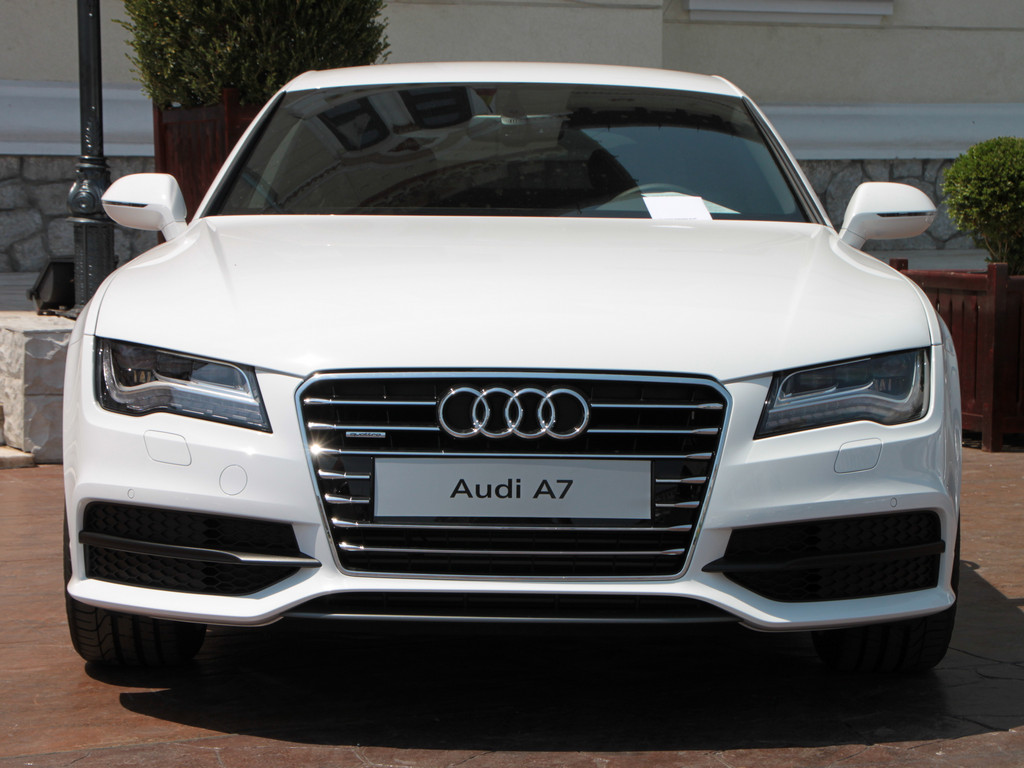
9. **Audi A7 Sedan: Sportback Style, Slipping Value**The Audi A7 stands out in the luxury sedan crowd with its distinctive Sportback design, blending the elegance of a sedan with the sleek profile of a coupe and the practicality of a hatchback. It offers a unique aesthetic, powerful engine options, and a highly sophisticated interior that makes a bold statement. Despite its premium appeal and design-forward philosophy, the Audi A7 experiences considerable depreciation, losing 60.5% of its original MSRP over five years, an average financial decline of $43,435.
The niche appeal of the A7’s Sportback body style, while initially a draw for some, can also be a factor in its accelerated depreciation in the used market. While striking, unique designs can sometimes limit the broader buyer pool compared to more conventional sedan shapes. As automotive design trends evolve and new models with updated aesthetics emerge, an older A7, no matter how stylish at launch, might struggle to maintain its exclusivity and desirability among a wider segment of used car buyers.
Similar to its A6 sibling, the A7 is heavily impacted by the rapid evolution of technology and the high costs associated with maintaining a sophisticated luxury vehicle. The array of advanced features, from its virtual cockpit to its intricate driver-assistance systems, requires specialized and expensive servicing. Used car buyers are acutely aware that once the factory warranty expires, unexpected repairs could lead to significant financial outlays, making a five-year-old A7 a potentially costly gamble for many.
Furthermore, the A7’s position in the luxury market means it faces stiff competition not just from traditional sedans but also from the growing popularity of luxury SUVs and crossovers. As consumers increasingly gravitate towards higher-riding vehicles for their perceived practicality and versatility, demand for even stylish luxury sedans can wane, creating an imbalance between supply and demand in the used market. This shift in consumer preference directly contributes to a faster rate of value loss.
Ultimately, while the Audi A7 offers a compelling blend of style, performance, and luxury, its unique attributes don’t protect it from the common pitfalls of luxury car depreciation. Those enchanted by its distinctive design and premium offerings should factor in the considerable financial impact of its value loss over five years, understanding that beauty and innovation in the luxury segment often come with a substantial depreciation cost.
Car Model Information: 2019 Lexus GX 460 Premium
Name: Audi A7
Caption: Audi A7 S Line
Manufacturer: Audi
Class: Executive car
Production: 2010–present
Layout: ubl
Platform: Volkswagen Group MLB platform
Predecessor: Audi 100 Coupé S
Categories: 2020s cars, All-wheel-drive vehicles, All Wikipedia articles in need of updating, Articles with short description, Audi vehicles
Summary: The Audi A7 is an executive five-door liftback produced by Audi since 2010. The coupé variant of the Audi A6 saloon/estate, the Audi A7 features a sloping roofline with a steeply raked rear window and integrated boot lid (forming the Sportback), and four frameless doors. A sport version called the S7 has been made since 2012, and a high-performance model called the RS 7 has been in production since 2013. An extended-wheelbase three-box, four-door saloon derivative called the A7L has been produced in China since 2021.
Get more information about: Audi A7
Buying a high-performing used car >>>
Brand: Audi Model: A7 Sedan
Price: $30,991 Mileage: 72,932 mi.
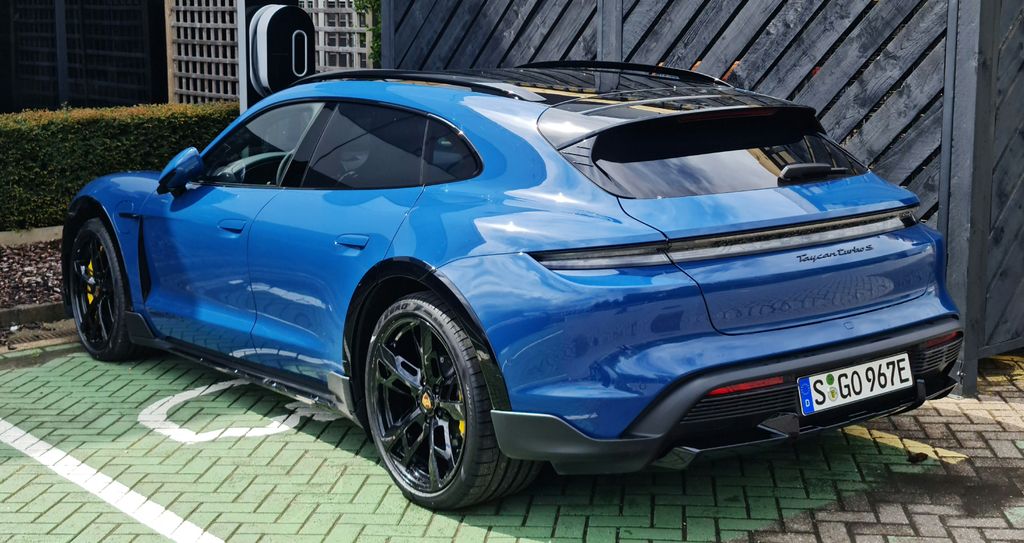
10. **Porsche Taycan EV: Electric Performance, Premium Depreciation**The Porsche Taycan arrived on the scene as a true electric sports car, combining Porsche’s legendary performance DNA with an all-electric powertrain. It quickly earned accolades for its blistering acceleration, precise handling, and high-quality interior, establishing itself as a formidable challenger in the burgeoning luxury EV market. However, despite its exceptional performance and premium badge, the Taycan faces significant depreciation, losing 60.1% of its original MSRP over five years, representing an average financial loss of $59,691.
This substantial depreciation highlights the combined challenges of being both a luxury vehicle and a high-performance electric car. As iSeeCars Executive Analyst Karl Brauer explains, “While a premium badge and the increased performance or luxury features that come with it are often sought out by new car buyers, the used car market doesn’t prioritize those traits to the same degree, thus the consistently higher depreciation for luxury models.” This sentiment is particularly true for performance EVs, where the cutting edge is constantly redefined.
The rapid advancements in EV battery technology, charging speeds, and range capabilities significantly impact the resale value of earlier models. Even a technologically sophisticated car like the Taycan can feel less competitive as newer EVs offer greater efficiency or longer ranges. Used EV buyers, especially those considering a performance model, are often highly sensitive to these specifications, making older models less desirable despite their initial prowess.
Ownership costs for a high-performance luxury EV are another considerable factor. While maintenance might differ from a combustion engine, specialized servicing for complex electrical systems, potential battery health concerns, and the high cost of replacement components can be prohibitive once the initial warranty expires. These prospective expenses create a hurdle for secondhand buyers, depressing demand and consequently, resale values.
Moreover, the Taycan occupies a niche within an already niche luxury EV segment. While it attracts a specific type of buyer, the overall market for a used, high-depreciation, high-performance electric luxury sedan is limited. This restricted demand, coupled with the rapid evolution of the technology, makes it challenging for the Taycan to retain its value compared to more stable, mainstream segments.
While the Porsche Taycan offers an exhilarating and luxurious electric driving experience, its journey through the used car market is a powerful illustration of how the combined forces of luxury depreciation and rapid EV technological obsolescence can erode significant value. For those captivated by its performance, the driving experience is paramount, but for financially pragmatic buyers, this pioneering EV serves as a potent reminder of the high cost of cutting-edge prestige over the long term.
Car Model Information: 2019 Lexus GX 460 Premium
Name: Porsche Taycan
ModelCode: Type 9J1
Manufacturer: Porsche
Production: 2019–present
Assembly: Stuttgart
Designer: Emiel Burki
Class: Executive car
BodyStyle: Sedan (automobile),shooting brake
Platform: Volkswagen Group MSB platform#J1 Platform Models
Engine: Synchronous motor#Permanent-magnet
Layout: Rear-motor, rear-wheel-drive
Transmission: 1-speed direct-drive (front 8.05:1),2-speed automatic (rear; 16:1 and 8.05:1)
Battery: lithium-ion battery,lithium-ion battery
ElectricRange: cvt
Charging: Direct current,Direct current,Alternating current,Alternating current
Length: Convert
Wheelbase: Convert
Width: Convert
Height: Convert
Weight: Convert
Related: Audi e-tron GT
Sp: uk
Categories: 2020s cars, All-wheel-drive vehicles, All articles with unsourced statements, Articles with short description, Articles with unsourced statements from January 2025
Summary: The Porsche Taycan is a battery electric luxury sports sedan and shooting brake car produced by German automobile manufacturer Porsche. The concept version of the Taycan, named the Porsche Mission E, debuted at the 2015 Frankfurt Motor Show. Four years later, the production Taycan was revealed at the 2019 Frankfurt Motor Show. As Porsche’s first series production electric car, it is sold in several variants at different performance levels, and may spawn further derivatives in future models. It is built on the J1 electric car platform shared with the similarly shaped Audi e-tron GT.
The name “Taycan” (/taɪ-kan/) is a reference to the steed on the coat of arms of the city of Stuttgart, found on the Porsche crest. In Turkish, tay means colt or young horse, and can means lively. The “Turbo” name used in the higher trims, being electrically powered, does not mean to have turbochargers, but to have “increased power”.
Get more information about: Porsche Taycan
Buying a high-performing used car >>>
Brand: Porsche Model: Taycan EV
Price: $30,991 Mileage: 72,932 mi.
Read more about: Analyst Alert: The 7 Electric Cars You Might Want to Reconsider as 2025’s Worst Value Investments
Understanding car depreciation is not just a statistical exercise; it’s a critical component of smart financial planning for any vehicle purchase. As we’ve seen, whether it’s a flagship luxury sedan, an innovative electric model, or a sophisticated executive car, the rate at which a vehicle loses value can drastically impact your overall cost of ownership. The data clearly shows that some sedans, despite their allure, turn into significant financial liabilities after just five years. By being informed about these ‘resale disasters,’ consumers can make more empowered decisions, ensuring that the excitement of a new car doesn’t turn into a regretful financial burden down the road. In a market where values fluctuate and innovation never stops, foresight is truly your most valuable asset.

